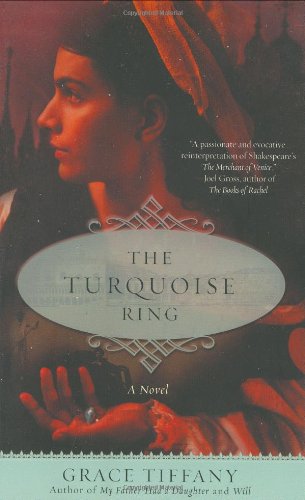The Turquoise Ring
The Merchant of Venice is arguably one of Shakespeare’s most controversial works. The 16th century tale of vengeance and religious intolerance among rival merchants was recently made into a film, and now comes to us reinvented as a new novel by Grace Tiffany (author of My Father had a Daughter and Will.)
Told from the viewpoints of five women, this entertaining, though at times uneven, novel employs the symbol of a turquoise ring made in Toledo to weave together the stories of brave Leah, her rebellious daughter Jessica, clever courtesan Nerissa, eccentric heiress Portia, and a Moorish servant with a secret, Xanthe. Some of these names will be familiar to Shakespeare aficionados, though such knowledge is not required in order to enjoy Tiffany’s intelligent feminist construction of the Renaissance woman’s plight, as well as her ode to the revered playwright’s talent for finely honed characterization and rambunctious dialogue. Though the novel does offer a well-researched and charismatic depiction of the money lender Shylock (known here as Shiloh, an independent spirit who flees the Spanish Inquisition and martyrdom of his beloved wife only to find himself captive to Venetian hypocrisy and the bitterness of his own heart), he does not overshadow the plot. This is a refreshing choice that instead allows Tiffany to frame her narrative through the ghosts of lost love and exile. While Jessica, Nerissa, and Portia supply a diverse, sometimes amusing, and always sympathetic portrait of how women sought survival in an often callous age, it is Leah’s lyrical beginning and Xanthe’s sage ending that elevate this unusual interpretation of a classic stage drama.










